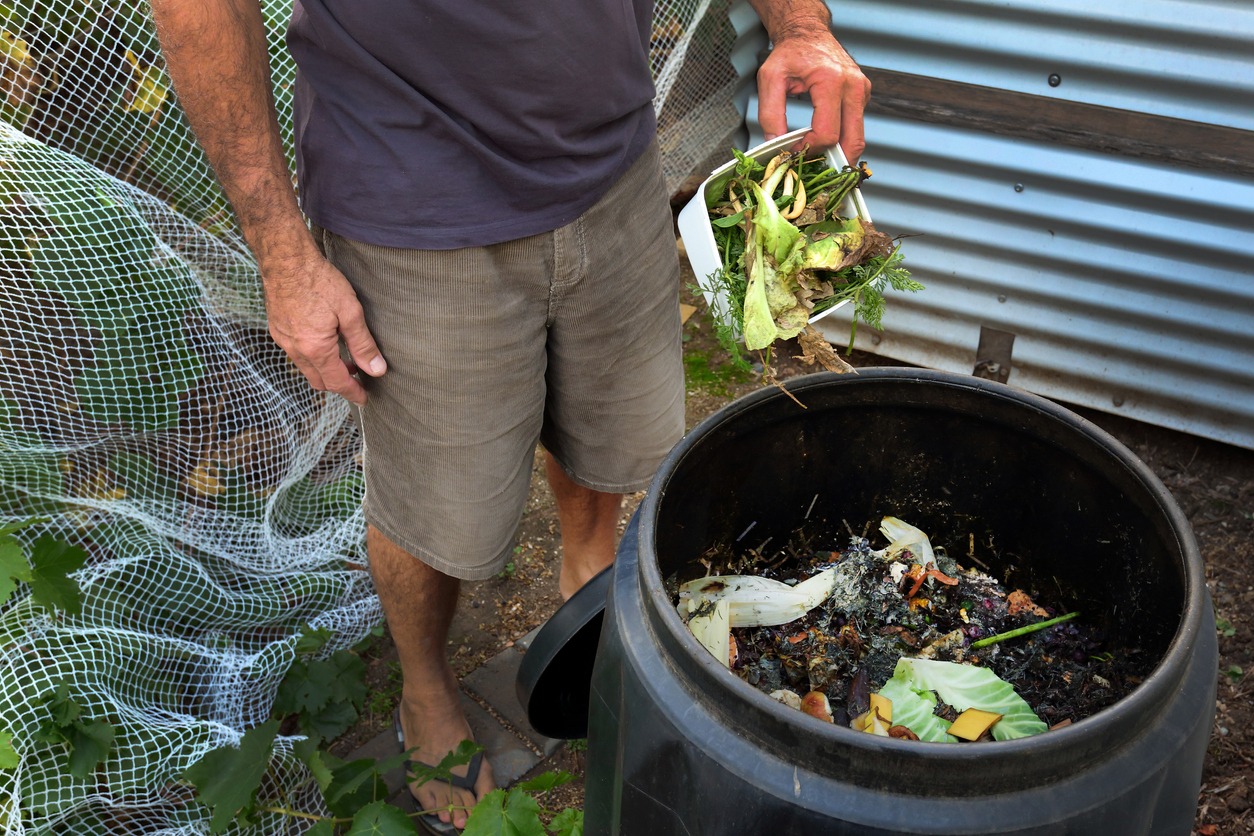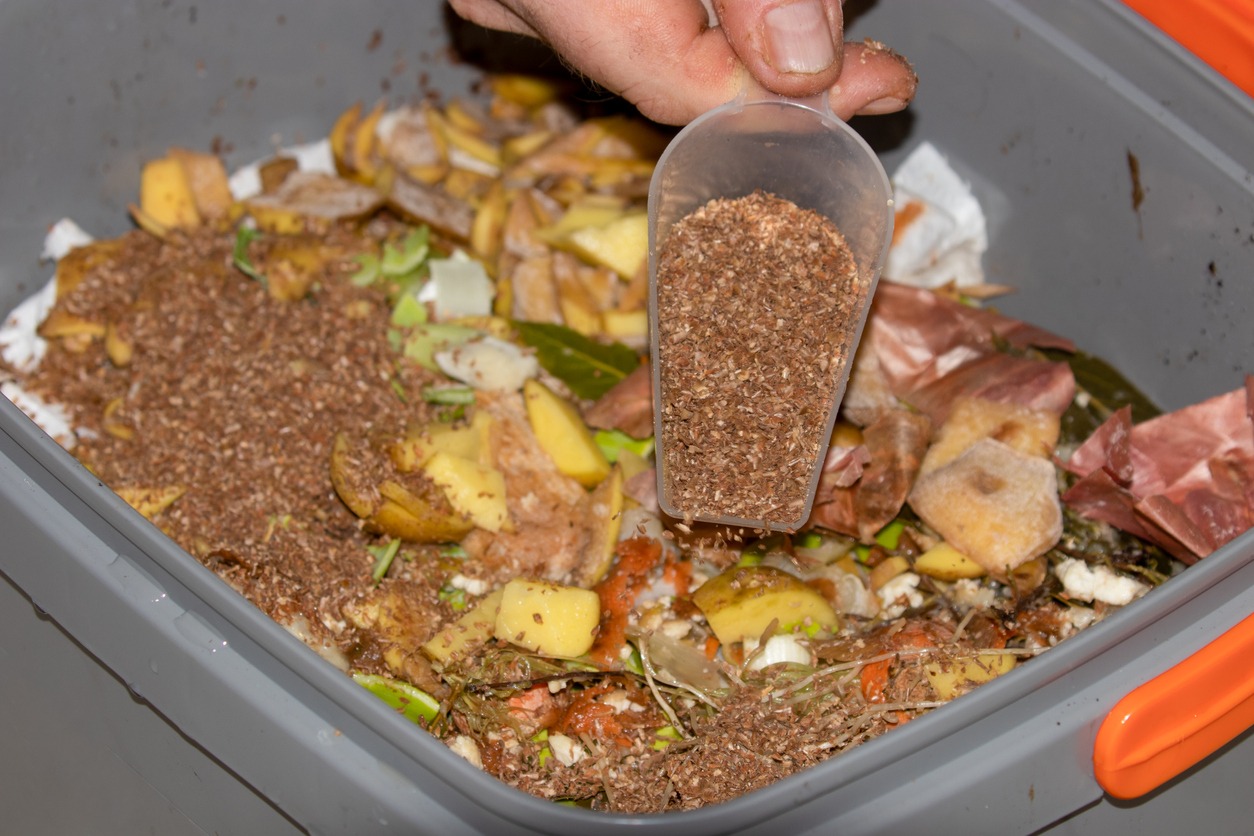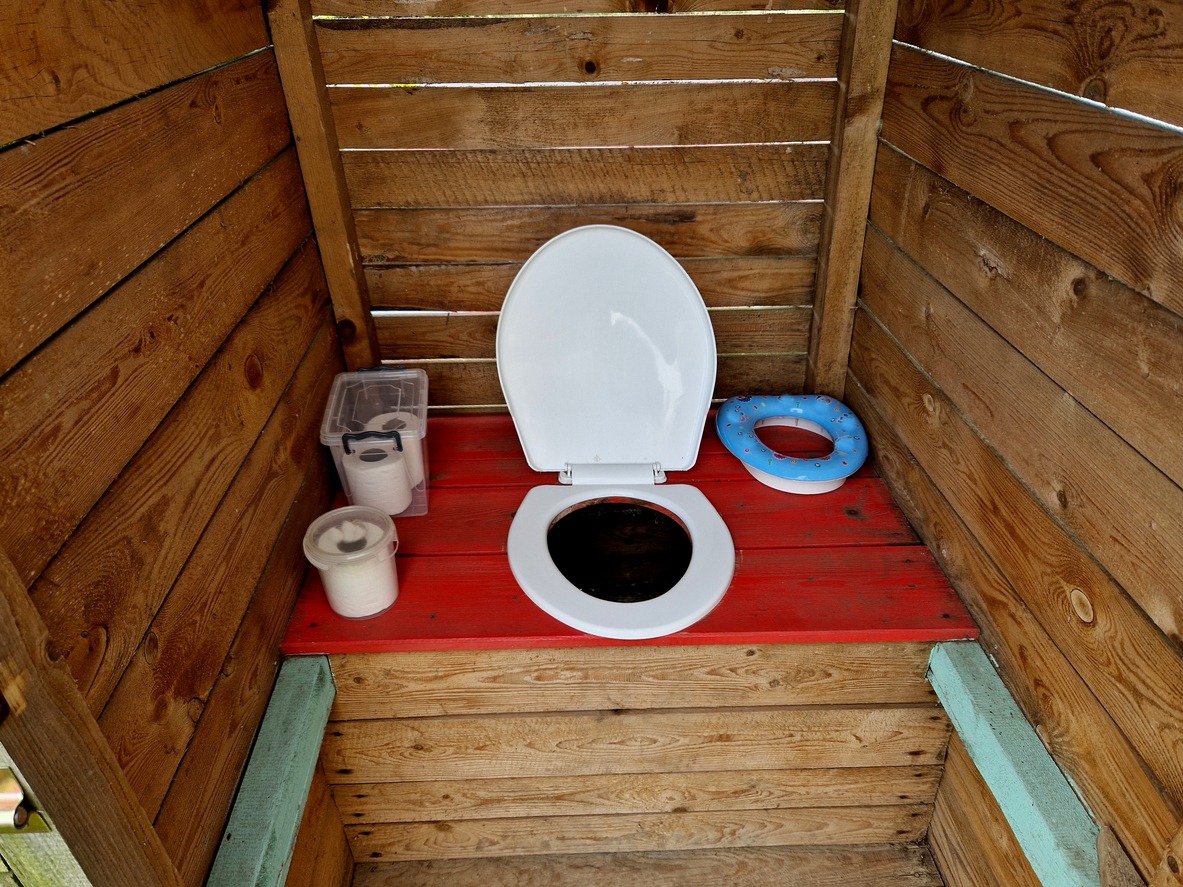Off-the-grid living comes with its own set of advantages as well as drawbacks. Embracing self-sufficiency typically entails taking responsibility for all aspects of day-to-day life, including essential facets like maintaining sanitary conditions. This guide is committed to discussing the important subject of sanitation in off-grid living.
The Importance of Sanitation in Off-Grid Living
The maintenance of correct sanitation practices is not only a matter of convenience in off-grid environments, where access to public utilities may be limited or nonexistent, but it is also a fundamental requirement for one’s health and well-being as a whole. In the sections that follow, we will go over several reasons why it is important for individuals and communities that choose to live off the grid to have access to functional sanitation.
Sanitation is important in all types of living situations, but it takes on an even greater significance in off-grid living scenarios, which typically involve restricted or nonexistent access to centralized utilities and services. Living off the grid typically entails utilizing one’s resources for water supply, waste management, and energy production rather than depending on public utilities. Having proper sanitation is especially important when living off the grid for several reasons, including the following:
1. Health and Hygiene: Sanitation done right stops the spread of disease and helps people keep their hygiene in check. Inadequate sanitation can lead to the contamination of water sources, which in turn can cause diseases that are spread through contaminated water, such as cholera, dysentery, and typhoid.
2. Water Conservation: When living off the grid, one must frequently rely on dwindling water supplies, such as those provided by wells, rainwater collection systems, or natural springs. The application of efficient sanitation practices contributes to water conservation by lowering the amount of water that is wasted and increasing the amount of water that is used effectively.
3. Environmental Impact: Inappropriate disposal of waste can result in pollution, which in turn can cause harm to wildlife as well as contaminate soil and water sources. It is essential to practice responsible waste management in off-grid settings, which are typically characterized by a more delicate ecosystem, to reduce the number of unfavorable effects on the surrounding environment.
4. Sustainability: The desire to live sustainably and independently is a common impetus for people who choose to live off the grid. These objectives can be met by putting into practice sustainable sanitation practices such as the use of toilets that compost waste, greywater systems, and environmentally friendly cleaning products.
5. Resource Management: In situations not connected to the grid, resources such as energy, water, and nutrients are frequently in short supply. It is possible to make more effective use of these resources by following correct sanitation procedures. Composting animal and human waste, for instance, can result in the production of beneficial compounds that plants can use.
6. Legal Compliance: There are frequently legal requirements for sanitation standards, even in locations that are off the grid or otherwise isolated. It is imperative that you comply with these regulations, not only for legal reasons but also for the sake of the public’s health and safety.
7. Community Well-being: When it comes to preserving a high quality of life and fostering a sense of well-being among residents, proper sanitation practices are necessary in communities that are not connected to a grid of any kind. A community that is both healthy and prosperous will have practices that are effective in the management of waste and hygiene.
8. Resilience to Disasters: Living off the grid typically entails increasing one’s level of self-sufficiency and resilience in the face of unexpected emergencies or natural disasters. Even in situations where the external infrastructure is compromised, essential services can be preserved with the help of well-designed sanitation systems.
9. Aesthetic and Psychological Benefits: Living spaces that are clean and well-maintained contribute to an overall improvement in one’s quality of life. The maintenance of appropriate sanitation practices contributes to creating a pleasant and aesthetically pleasing environment, both of which can potentially improve one’s mental and emotional health.
10. Long-term Sustainability: The practicality of off-grid living arrangements over the long term is improved by the implementation of environmentally friendly sanitation practices. Off-grid communities have the potential to thrive for many generations to come if they take steps to protect their natural resources and reduce their negative impact on the environment.
Sanitation Challenges and Solutions for Off-Grid Living
Living off the grid presents its own set of challenges when it comes to sanitation, such as the lack of access to municipal services, restricted water supplies, and the requirement for environmentally responsible waste disposal practices. This section will provide an in-depth discussion of these challenges as well as suggestions for practical solutions, such as novel technological approaches and practices that are kind to the environment.
Sanitation Challenges in Off-Grid Living:
Limited Access to Municipal Services: Off-grid locations typically do not have access to municipal sewage and waste disposal services; as a result, it can be difficult to properly manage human waste in these areas.
Water Source Contamination: Off-grid communities that lack access to centralized water treatment may have a more difficult time ensuring that their water supply is clean and safe, which could result in potential hazards to residents’ health.
Waste Disposal and Recycling: In off-grid settings, it can be difficult to find methods that are both sustainable and effective for the disposal of waste and the recycling of materials, which can lead to environmental concerns.
Lack of Adequate Plumbing Infrastructure: It is possible that off-grid homes will not have access to traditional plumbing systems. As a result, it will be necessary to find alternative solutions for the distribution of water and the removal of waste.
Proper Greywater Management: To handle greywater (water from showers, sinks, and other non-potable sources) and reuse it for purposes other than potable water, specialized equipment and knowledge are required.
Pest and Vermin Control: Off-grid environments may be more prone to infestations of pests and vermin, which, if they are not effectively managed, can lead to sanitation problems.
Sanitation Solutions for Off-Grid Living:
Composting Toilets: Composting toilets take human waste and turn it into compost, which can then be used to fertilize plants. This makes composting toilets a more environmentally friendly alternative to traditional sewage systems.
Water Filtration and Purification: To ensure that water drawn from local sources is suitable for human consumption, filtration systems, ultraviolet sterilization, or chemical treatments can be utilized.
Rainwater Harvesting: Rainwater can be collected and stored for use in a variety of domestic applications, which can help reduce reliance on water supplied from outside sources.
Greywater Systems: Install systems that will collect greywater and treat it so that it can be reused for purposes such as watering plants and flushing toilets.
Waste Segregation and Recycling: Create a system for the management of waste that will separate organic, recyclable, and non-biodegradable materials so that they can be disposed of or recycled appropriately.
Understanding Waste Management
The Different Types of Waste
Organic Waste: Food scraps, yard trimmings, and other biodegradable materials are examples of organic waste produced by people who live off the grid. The practice of composting is essential for the management of organic waste.
Non-Organic Waste: This class includes things like plastics, metals, and glass, all of which are not capable of decomposing naturally. Off-grid living frequently emphasizes decreasing the use of such materials and locating environmentally friendly alternatives.
Greywater: The term “greywater” refers to the wastewater that is produced as a byproduct of domestic activities such as washing dishes and clothing. Gray water is typically treated and recycled for use in activities such as watering plants in off-grid systems.
Hazardous Waste: Living off the grid requires careful management of potentially harmful materials, such as batteries, chemicals, and medications that have passed their expiration dates.
Traditional vs Off-Grid Waste Management
Traditional Waste Management: The collection of waste and its subsequent transport to centralized facilities for processing are the two main components of the conventional method of managing waste. Because there is no traditional infrastructure present, those who choose to live off the grid frequently turn to decentralized solutions.
Off-Grid Waste Management: Off-grid waste management emphasizes self-sufficient and environmentally friendly methods. Composting, recycling, reusing, and possibly even the creation of do-it-yourself waste treatment systems could all be part of the solution.
Environmental Impact
Minimizing Environmental Footprint: The goal of off-grid waste management is to reduce the negative effects that human activity has on the environment by reducing the amount of waste that is generated and increasing the amount of resource efficiency achieved through the use of methods such as composting and repurposing.
Pollution Prevention: Living off the grid necessitates a more conscientious approach to preventing the soil, water, and air from becoming polluted because there is no access to municipal services. This includes getting correctly rid of hazardous materials.
Resource Conservation: Living off the grid often encourages resource conservation through the reuse of materials and the reduction of dependence on products with a single use.
Energy Efficiency: When it comes to waste management in an off-grid environment, energy-efficient solutions may be necessary. Some examples of these include the utilization of passive solar composters and the production of energy from organic waste.
Biodiversity and Habitat Protection: Off-grid waste management helps protect local biodiversity and habitats by reducing the pollution and habitat loss caused by conventional waste disposal. This is accomplished by using alternative energy sources.
It is important to have a solid understanding of these aspects of waste management in an off-grid setting to keep living a lifestyle that is sustainable and kind to the environment. It entails taking a holistic approach to the problem, incorporating waste reduction, recycling, and responsible disposal practices, all adapted to the specific difficulties and opportunities that come with living off the grid.
What is Composting Toilets?
A composting toilet is a type of toilet that, through the use of natural decomposition processes, can convert human waste into compost that can then be used again. Composting toilets, in contrast to standard toilets that flush with water, do not require access to a sewage system to dispose of waste, nor do they require water for the flushing mechanism. Instead, they make use of biological processes to break down waste and transform it into a material that is rich in nutrients and can be applied as fertilizer.
How Composting Toilets Work
Composting toilets are based on the idea of aerobic decomposition, which describes the process by which microorganisms consume organic matter while oxygen is present in the environment. The following is a summary of the fundamentals of how they function:
Separation of Solids and Liquids: Urine and solid waste are typically kept in separate compartments in many composting toilet designs. Because an excessive amount of moisture can slow down the composting process, this separation helps control the moisture levels in the chamber in which the composting takes place.
Aerobic Decomposition: Within the composting chamber, the waste is broken down thanks to a combination of air, microorganisms, and organic material that has been mixed. The conditions in this environment make the decomposition of organic matter into compost easier.
Ventilation System: Composting toilets come equipped with a ventilation system that maintains a steady flow of oxygen to the chamber in which the compost is being broken down. This helps to maintain aerobic conditions and reduces any odors that may be present.
Carbon-rich Cover Material: After each use, customers typically cover their trash with a material that is rich in carbon, such as sawdust, coir from coconuts, or peat moss. In addition to assisting in the composting process, this helps maintain a healthy carbon-to-nitrogen ratio.
Composting Process: The organic matter that is contained within the composting chamber will, in due course, undergo the process of decomposition, which will result in a material that is similar to humus but is rich in nutrients.
Benefits and Drawbacks
Benefits:
Water Conservation: Because composting toilets do not require any water for the flushing process, they are an excellent choice for areas that are short on available water.
Environmental Impact: They alleviate the burden placed on sewage systems and protect water bodies from being polluted.
Nutrient-rich Compost: The result can be applied to plants as a natural fertilizer, which is beneficial to the practice of sustainable agriculture.
Off-grid Capability: Composting toilets are an option for use in areas that do not have access to conventional sanitation systems, such as rural or wilderness areas.
Drawbacks:
Initial Cost: When compared to conventional toilets, composting toilets typically have a higher initial investment price.
Maintenance: They need to be maintained regularly, which includes emptying the finished compost and turning the compost at regular intervals.
Space Requirements: The fact that some models require more space than standard toilets does make them difficult to install in bathrooms with limited space.
Regulatory Considerations: The regulations and codes that govern composting toilets vary from one location to the next, which may make the use of these toilets impractical in some areas.
Installation and Maintenance
Installation:
Selecting a Model: Choose a model of a composting toilet that satisfies the demands placed on the available space in your bathroom.
Location: Check to see that there is sufficient ventilation as well as access for maintenance.
Ventilation System: Install the ventilation system so that the composting chamber has a steady supply of clean air to breathe throughout the process.
Maintenance:
Turning the Compost: Rotating the compost regularly will help to aerate it and will speed up the process of decomposition.
Emptying the Compost: After the contents of the composting chamber have been used up, the chamber must be emptied. The number of cleanings needed is proportional to both the size of the toilet and the number of people who use it.
Refilling Cover Material: Make sure there is a constant supply of carbon-rich cover material available for each application.
Cleaning and Sanitizing: Maintaining proper hygiene requires regular cleaning of the toilet.
Other Off-Grid Toilet Options
several other types of toilets can be used off the grid that should be considered in addition to composting toilets. One of these choices is the incinerating toilet, which places waste through the process of being reduced to ash and other sterile residues at high temperatures. This technology is especially helpful in settings where composting may not be an option due to environmental factors.
The urine-diverting toilet is yet another option. This type of toilet is intended to separate liquid waste from solid waste, which paves the way for more effective treatment and disposal.
Last but not least, pit latrines are still a common and time-honored method of off-grid sanitation. These latrines consist of nothing more than a hole dug in the ground for the disposal of waste. Whoever is looking for sanitation options that are self-sufficient and sustainable will find that each of these choices comes with its own set of considerations and benefits.
Greywater and Blackwater Management:
What is Greywater and Blackwater?
Graywater is water that has been used for domestic or commercial purposes, such as taking a shower, washing dishes, or doing the laundry. Greywater can be found in homes and commercial buildings. It is not contaminated with fecal matter, but it might contain traces of soap, detergents, and even a few trace amounts of organic matter. Blackwater is wastewater that is produced as a byproduct of toilets. Because it contains urine and feces, it is considered to be potentially hazardous due to the presence of pathogens.
Greywater and Blackwater Treatment Methods:
Greywater Treatment:
Filtration: The process of treating greywater starts here with this step. It involves using screens or filters to remove large particles, debris, and hair from the environment.
Biological Treatment: In this stage of the process, natural processes such as aerobic bacteria and plants are used to further decompose organic matter.
Disinfection: To eradicate any remaining pathogens, this process may involve the use of methods such as ultraviolet light, chlorination, or ozonation.
Storage and Distribution: Graywater that has been purified can be collected, stored, and then put to non-potable uses such as irrigation, flushing toilets, and even, in certain circumstances, doing the laundry or taking a shower.
Blackwater Treatment:
Preliminary Treatment: This includes the removal of large debris such as rags and sticks, which is typically accomplished with the help of screens and grit chambers.
Primary Treatment: At this stage, the process involves allowing the solid particles to fall to the bottom of a tank and form sludge, while the lighter particles, such as oils and fats, are allowed to rise to the surface and form scum.
Secondary Treatment: To further decompose organic matter, biological processes that typically involve bacteria and various other kinds of microorganisms are utilized.
Tertiary Treatment: To produce effluent of high quality, this may involve the use of more sophisticated processes such as filtration, UV disinfection, and chemical treatment.
Reusing Greywater
Reusing greywater is an efficient method for reducing one’s overall water usage. It is possible to use it for:
Toilet Flushing: One of the activities that uses the most water in residential settings is flushing the toilet, and treated greywater can be used for this purpose.
Irrigation: It is useful for watering plants, as well as for maintaining lawns and gardens.
Laundry and Dishwashing: In certain circumstances, greywater that has been treated can be put to use in the laundry and dishwashing.
Cooling Systems: Greywater that has been treated can serve as a source of cooling water in some commercial and industrial settings.
Safety Measures
When dealing with greywater and blackwater, it is necessary to put in place precautionary measures to reduce the risk of contamination and safeguard public health:
Proper Treatment: Make it a point to treat both greywater and blackwater through the appropriate processes before reusing the water or releasing it.
Avoid Cross-Contamination: It is important to keep greywater and blackwater separate to stop the spread of disease-causing organisms.
Regular Maintenance: To guarantee the treatment systems’ efficiency, regular cleaning and upkeep are required.
Proper Disposal: Before being released back into the environment, blackwater must first be treated to an extremely high standard.
Labeling and Signage: It is important to clearly label all of the pipes and systems to differentiate between greywater and blackwater.
Training and Education: Provide the occupants with education on the correct way to use and manage the greywater and blackwater systems.
Conclusion
In the world of off-grid sanitation and waste management, composting toilets are an innovative and pioneering solution. Their capability of effectively converting human waste into valuable compost addresses the urgent need for environmentally responsible and self-sufficient sanitation systems, particularly in areas that are off-grid or in remote locations.
Composting toilets present a workable and environmentally friendly alternative because they reduce the amount of water that is used and remove the requirement for expensive and complicated sewage infrastructure.
Nevertheless, for their implementation to be successful, several considerations, such as correct upkeep and maintenance, user education, and compliance with local regulations, need to be given careful thought. Composting toilets is an important first step toward achieving responsible waste management in off-grid environments, especially in light of the growing commitment we have to live a more sustainable lifestyle.




